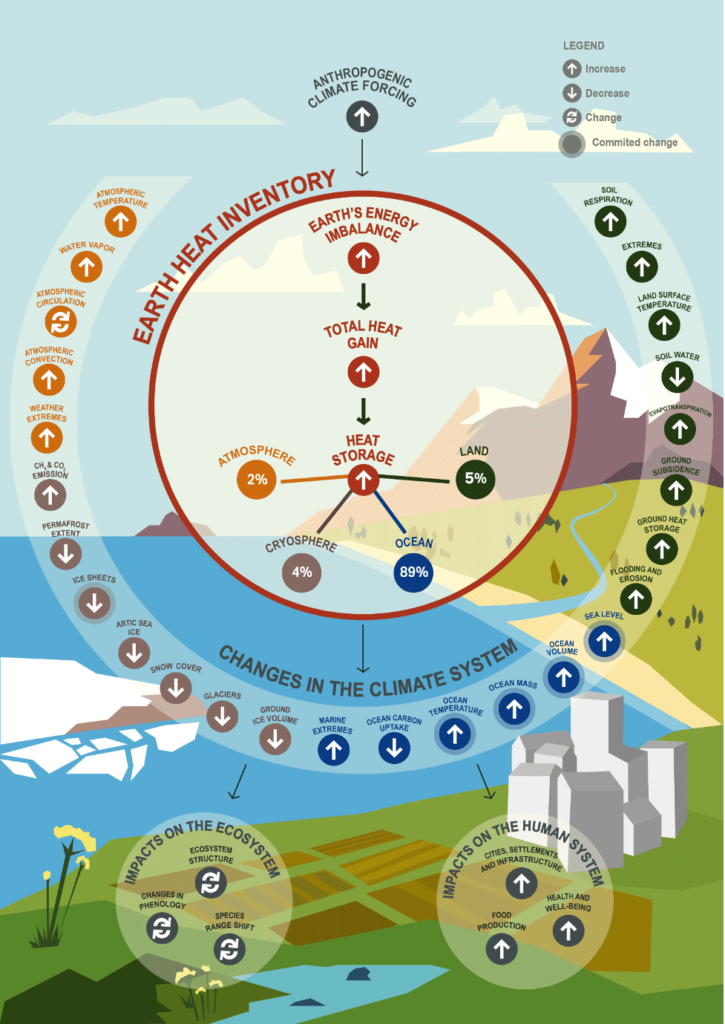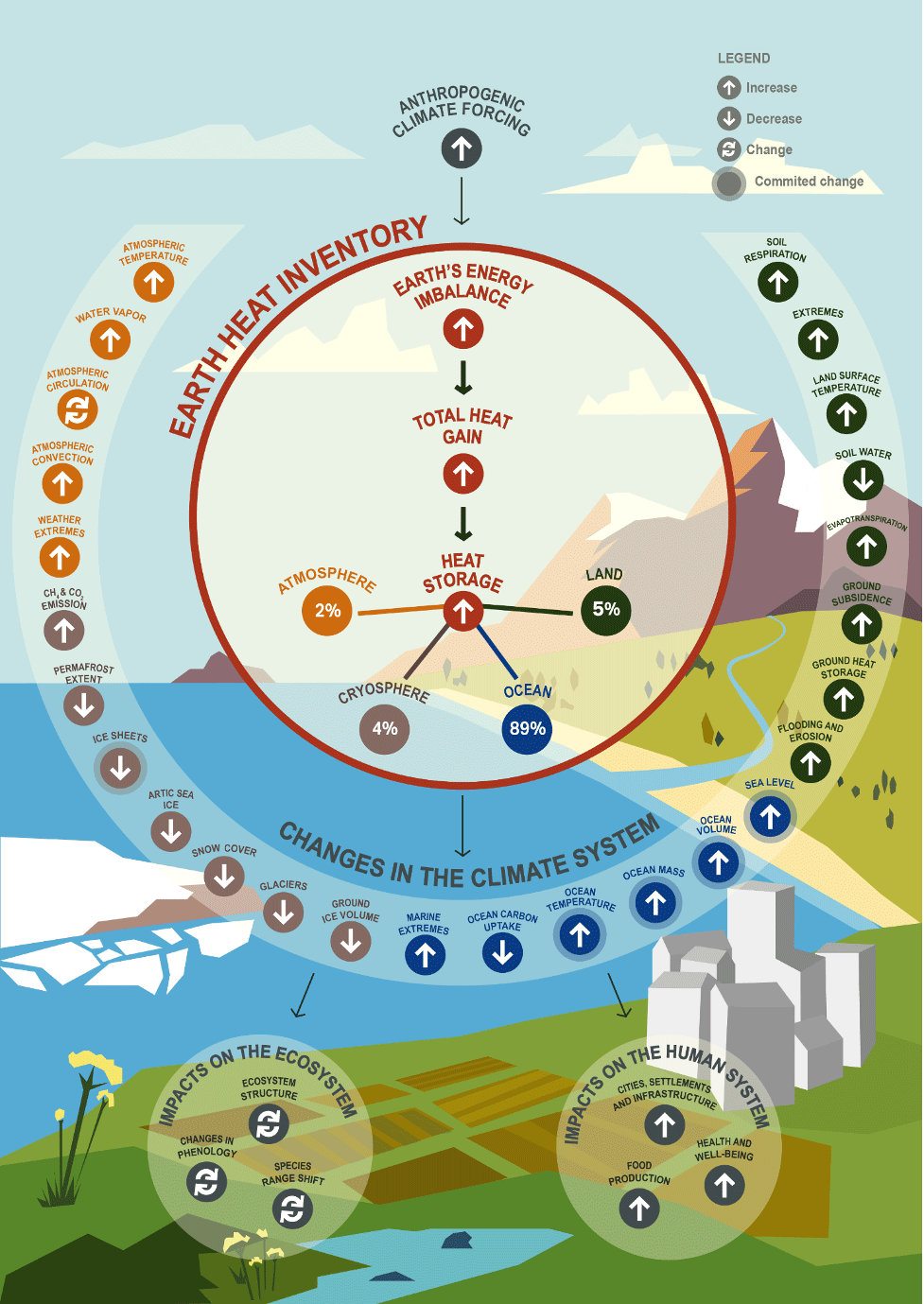The planet is warming because there is more energy arriving from the sun than leaving to space. This excess energy is heating the oceans, the land and the atmosphere above, leading to more severe heatwaves, droughts and flooding events. And as the oceans warm, they expand, which along with meltwater from diminishing ice on land, raise sea levels.

As made crystal clear in the recent Intergovernmental Panel on Climate Change 6th assessment report, without rapid, sustained and massive cuts in greenhouse gas emissions, this warming will continue. And a recent assessment predicts it is more likely than not that one of the next 5 years will breach what is considered a dangerous level of climate change as the world’s global average surface temperature becomes 1.5 degrees Celsius warmer that before the Industrial Revolution.
The developing El Niño, a natural fluctuation in ocean circulation and atmospheric wind and rainfall patterns, makes surpassing this worrying climate milestone more likely since heat released from the oceans may add just enough warmth to tip global temperatures in 2024 above the 1.5C milestone. There is a likelihood that the next few decades could see a permanent rise above this level to the even more dangerous level of 2 degrees Celsius above pre-industrial that the Paris climate agreement stipulates we should keep well below for the safety of our planet.
Our latest inventory of Earth’s heating rate published recently, using state of the art Earth Observation measurements, shows that if anything heat is flooding into the climate system at ever greater rates, a far cry from where we need to get to: where a balance between incoming and outgoing radiative energy is achieved. This is only possible by reaching net zero carbon dioxide emissions, where any residual emissions from human activities are balanced by extra uptake by the oceans and land surface. Even if we pass 1.5 or even 2 degrees Celsius of warming, every action taken to reduce greenhouse gas emissions is beneficial in avoid worsening impacts from climate change.
Our ongoing measurements of these carbon and energy balances are crucial in monitoring and assessing progress in tackling climate change along with its destructive influence on another natural balance which we are also closely scrutinising – the global water cycle, which nourishes and sustains our human societies and the ecosystems upon which we all depend.
Richard Allan is a Professor of Climate Science at the University of Reading.
This article is republished from the National Centre for Earth Observation.

